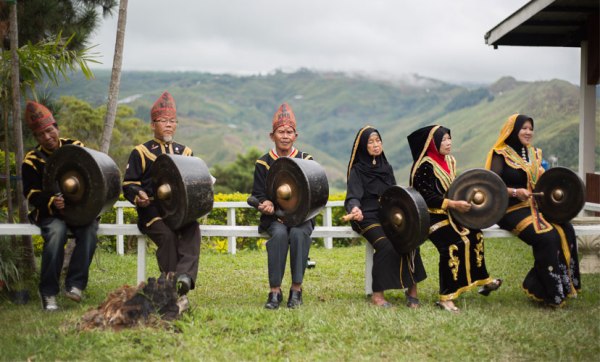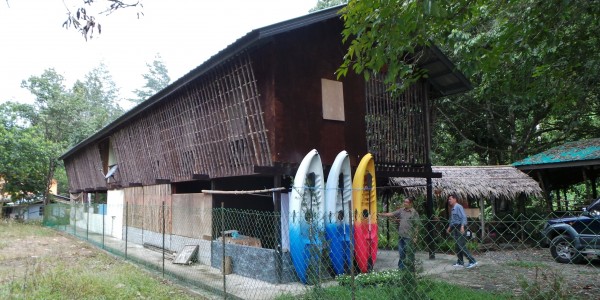To many developing countries, tourism is one major economic growth drivers due to their pristine beaches and natural wonders. Tourism generates jobs and improves the living standards of many residents of their local communities.
In 2016, the World Travel and Tourism Council reported that tourism sector created 68 million jobs (3.7 percent of total employment representing 2.8 percent of total GDP) in Asia Pacific region. It supported a total of over 150 million jobs, equivalent to one in every 11 jobs.
Despite its benefits, tourism has been causing detrimental effects in many places where it is mismanaged. Over the years, large-scale mass tourism, where quantity of visitors becomes the priority, has contributed to the degradation of the local environment. For example, hotels and resorts that are poorly-designed and built on a natural habitat may cause more harm than good.
Mass tourism has also increased the dependence on external market with tourism industries in developing countries and least developed countries being largely run by companies based in foreign countries. In most cases, its revenue has not been equally distributed to communities, as its big share still goes back to international and national offices of tourism operators.
To counter these negative effects, community-based tourism (CBT) offers an alternative view to mass tourism promising a more meaningful impact to both visitors’ experience and community.
By concept, Community Based Tourism (CBT) is any tourism-related activity that is community owned and managed or coordinated at the community level that focuses both on showcasing the local’s tourist areas and improving the well-being of its residents. The program can support sustainable livelihoods and protection of local people’s cultural identity.
CBT can bring about several economic, environmental, and social benefits:
- Economic benefits
Community-based tourism encourages community’s stakeholders to co-develop and implement relevant projects. This process ensures creation of local jobs and revenue retention in the community itself. This also helps them cope with problems generated by mass tourism by easing economic dependence on external markets.
- Environmental benefits
Community-based tourism seeks to build on its natural ecosystem. This lessens the risk of causing more danger to the local environment in the long-run.
- Social benefits
Community-based tourism empowers local citizens bringing about a sense of ownership and cooperation to reach common goals which results to enhancing social cohesion.
Kinabatangan’s Model Ecologically Sustainable Community Tourism (MESCOT) Project in Malaysia offers a good case as to how a well-managed CBT can provide lasting impacts to both local residents and tourists. This project was initially planned to ensure stable income for the indigent villagers who had heavily relied on natural resources to support their living.
Kinabatangan town is located in Sandakan, Sabah, Malaysia. It is the large area with 7,800 hectare with a population of 147,000.
The MESCOT project is run under the strict criteria set by Malaysia’s Ministry of Tourism and Culture. The criteria include optimum standards for security and cleanliness and a minimum of 10 houses for each homestay cluster with three rooms per houses.
The Homestay program offers different activities for tourists which include traditional games like village boat service, building traditional fish traps and cultural dancing performance. All these programs and activities are evaluated and monitored based on service quality, activity packages, homestay management and promotion by Sabah Homestay Association.
There are four key factors which contributed to the MESCOT’s success:
- Capacity building for the community
Hosts of the homestays undergo the required training on the homestay management. For the first four years of its operation, residents ranging from 18 to 35 years old were trained in ecotourism planning, business skills, English language, and natural and cultural resources research. This ensures all Homestay Programs have the same scheme and structure that will provide visitors with minimum standard quality of service.
- Planning, implementation, and monitoring agencies
National government has provided full support for participating homestay houses. The Ministry of Tourism provides directions, policies and guidelines for registration and development of the program. It is also in charge of marketing and promotion. The Ministry of Rural and Regional Development provides infrastructure for rural development and training and capacity building for their communities. The Sabah Homestay Association monitors the program management, development and promotions.
- Promotion of Green economy
MESCOT project has adopted the Green Economy strategy by creating new alternative income sources for local residents who obtained seasonal income by working in the nearby timber camps. With the project introduced, villagers no longer have to depend on natural resources which prevent them from further degrading ecosystem and causing loss of biodiversity.
- Active involvement of the local community
The success of CBT relies on the goodwill and cooperation of residents. The villagers were involved from the initial project stage, engaging their assistance in forest fire fighting and restoration activities and training their skills in managing visitors.
After 10 years of implementation, MESCOT has created jobs for more than 128 people on a rotation system. Homestay providers earned up to RM 2,000 monthly (USD 467). This project contributes to the improvement of the city residents’ housing condition and living standards.
The case of Kinabatangan provides guiding principles for other local governments that may have yet to reach their tourism potential but must minimize the environmental cost at the same time.
Local residents must co-develop and implement their own programs that can support both their livelihood and protect their natural environment as well. It is essential that national governments can supervise other aspects of CBT management that are beyond the scope of the local governments. This includes extensive, capacity-building programs and facilitation in building consensus in many of its different community discussions. Most importantly, the key success to CBT depends on how residents can take pride and care of their home.
References:
Community-Based Tourism in Developing Countries: A Case Study, 2011, an International Multidisciplinary Journal of Tourism (http://www.chios.aegean.gr/tourism/VOLUME_6_No1_art04.pdf?origin=publicati)
Community Based Tourism: Group Report and Recommendations, UNWTO (http://cf.cdn.unwto.org/sites/all/files/pdf/community_based_development_group_seesion.pdf)
Tourism and Poverty Alleviation, 2010, WTO (http://step.unwto.org/content/tourism-and-poverty-alleviation-1)

By Sion Kang
Sion Kang recently completed her dual bachelor’s programs of International Studies and European Union Studies at Hankuk University of Foreign Studies (HUFS) in Seoul, Republic of Korea. Her interest lies in the field of sustainable development and macro-economic policy in developing countries. She has a work experience at an NGO in Lao PDR, and was mainly in charge of devising and implementing educational activity and fundraising program and researching capacity building and knowledge exchange.


